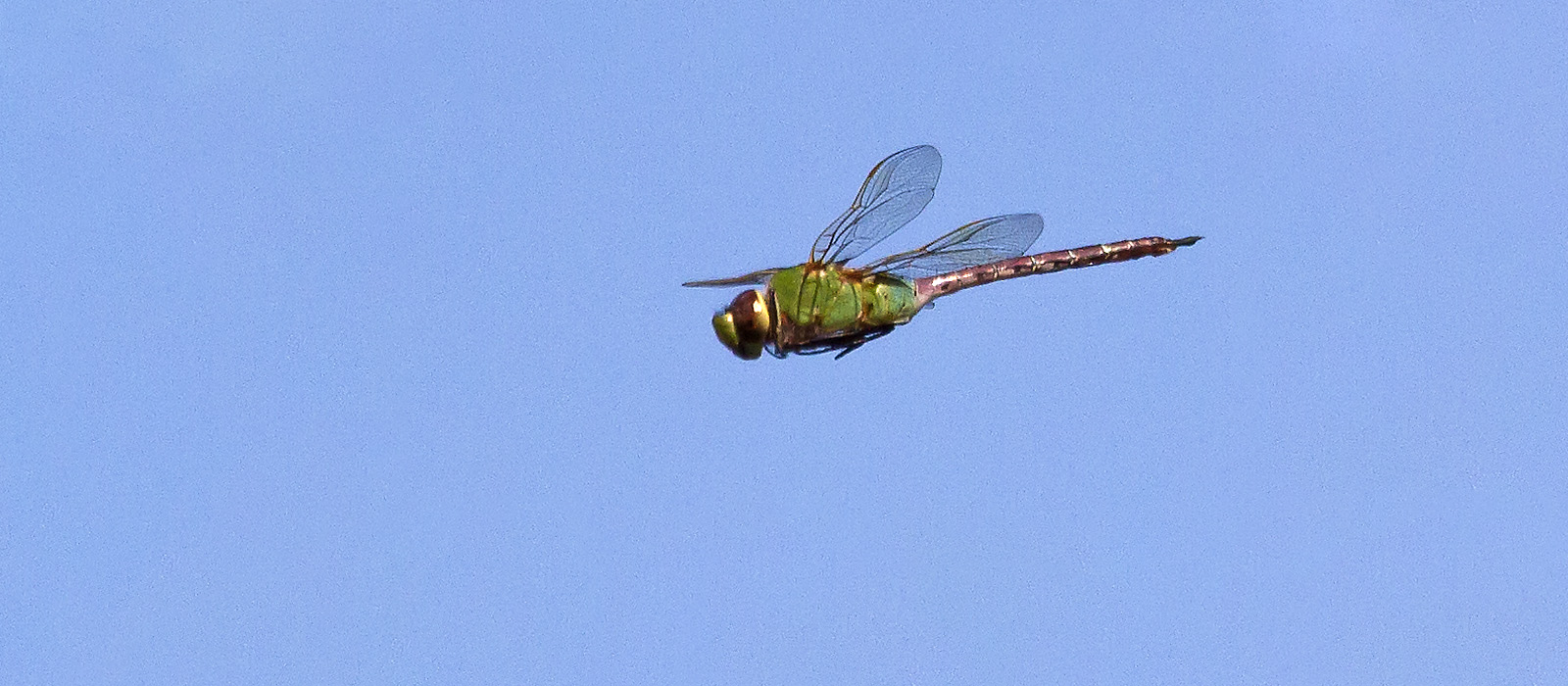
Going Nuclear for Dragonflies
How a Single Neutron Tells Us Where a Dragonfly Grew Up
On a crisp, sunny morning in September, toward the close of a typical summer for a dragonfly, which basically involves flying around, killing things and having sex beside a pond, a Common Green Darner took off and began to fly south. As it cruised past the summit of Vermont’s Mt. Philo, with Lake Champlain below and the Adirondacks off in the distance, the dragonfly crossed paths with a Merlin.
A falcon that kills in flight, the Merlin swerved, plucked the dragonfly from the sky with its talons and immediately began to eat on the wing — predator and prey now continuing southbound together. In their wake, a single dragonfly wing tumbled like an autumn leaf toward fields of goldenrod and aster at the base of Mt. Philo.
Eagles, hawks and falcons aren’t the only migrants moving south past mountains this fall. Joining them are a procession of dragonflies. Although biologists know plenty about the autumn raptor and Monarch migrations, we are only now beginning to discover, with some creative nuclear physics, where these dragonflies go (at least those not killed in flight) and how migration figures in their conservation.
Fly or Die
Most dragonfly species do not migrate. In fact, most are now dead, having already mated during the summer season, leaving behind eggs and larvae to survive the winter. The killing frost will finish off much of the dragonflies still on the wing. But some survivors will leave us instead for warmer places.
Among the 460 or so dragonfly and damselfly species native to North America, at least five are classic long-distance migrants: Common Green Darner (Anax junius), Black Saddlebags (Tramea lacerata), Wandering Glider (Pantala flavescens), Spot-winged Glider (Pantala hymenaea) and Variegated Meadowhawk (Sympetrum corruptum).
Dragonflies migrate for the same reasons other animals migrate: to avoid inhospitable conditions, in this case habitats that freeze or become too cold for the dragonflies themselves or their insect prey. Monarchs go to Mexico. Broad-winged Hawks leave for wintering grounds stretching from southern Mexico into South America. Dragonflies head south to who knows where.
Having studied birds for two centuries, biologists know well their breeding and wintering distributions, even to the point of tracking an individual warbler or sparrow after it leaves us in the fall. Ornithologists catch lots of songbirds in nets and place around one leg a tiny silver bracelet embossed with a unique number — an avian social security number — and then release the birds to the winds. A small percentage of them, still sporting their bracelets, are later recaptured while in migration or on wintering grounds thousands of miles away. Better yet, we’re putting small electronic transmitters or other data-gathering devices on birds, such as Bar-tailed Godwits and Blackpoll Warblers, and learning more about their movements.
We can even track the movement of a single butterfly. I myself have placed little stickers, each bearing a unique alpha-numerical code, on the hind wings of more than 1,000 Monarchs here in Vermont and elsewhere in North America, and then set each one free to fly toward Mexico, where many are later encountered by other cooperating conservationists working in the Monarch’s wintering sites. With each recovery, we learn more about Monarchs and how they migrate. I’ve had four Monarchs, all tagged here in Vermont, recovered in Mexico.
Dragonflies aren’t so obliging. For one thing, we’re largely clueless about where they go. Monarchs concentrate each winter in stands of Oyamel Fir in mountains west of Mexico City. So we know where to go looking them and how to protect them. Tagging or somehow marking a dragonfly would be like putting a message in a bottle and tossing it out to sea. Actually, I suspect we’d find the bottle before the dragonfly.
But it turns out that we need not tag or otherwise mark these migratory dragonflies, because they themselves carry clues about where they have been. If a Merlin doesn’t get it first, we can catch any migrating dragonfly, analyze an element its tissue and determine roughly how far it has flown.
Recall that any atom has a nucleus, made up of protons and neutrons, surrounded by a cloud of electrons. An atom of the element carbon, for example, has a nucleus with six protons and six neutrons. It has an atomic mass of 12. We call it Carbon 12.
But nuclei don’t always play by the rules. Sometimes they have extra or fewer neutrons. These are called “isotopes.” A carbon atom with an extra neutron (but still with six protons) has an atomic mass of 13. We call it Carbon 13.
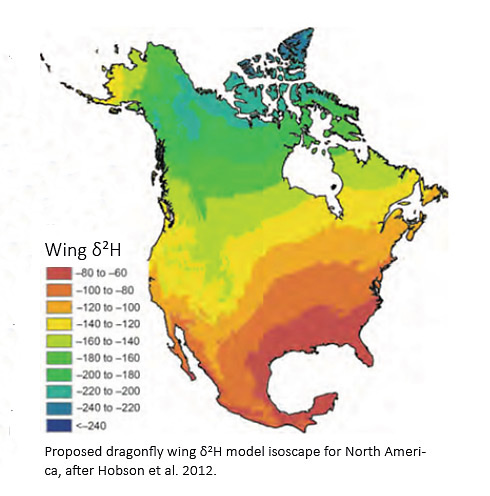 Lots of elements on the periodic table — hydrogen, oxygen, nitrogen and many others — vary by way of these isotopes. Isotopes are always rare in the world. Some are unstable and decay (those are radioactive). But some persist in the environment for a long time. Those we call “stable isotopes.” And for biologists, even one extra, lowly neutron in a stable isotope can play an outsized role in wildlife research.
Lots of elements on the periodic table — hydrogen, oxygen, nitrogen and many others — vary by way of these isotopes. Isotopes are always rare in the world. Some are unstable and decay (those are radioactive). But some persist in the environment for a long time. Those we call “stable isotopes.” And for biologists, even one extra, lowly neutron in a stable isotope can play an outsized role in wildlife research.
Hydrogen turns out to be a fine example for tracking dragonflies. A hydrogen nucleus normally contains a single proton and no neutron. But a tiny fraction of hydrogen atoms around the world carry one proton and one neutron. We call that “heavy hydrogen,” or deuterium. The amount of deuterium in water varies somewhat predictably in North America. The ratio of deuterium to hydrogen in water falling as rain or snow varies on a gradient corresponding roughly with latitude. You can map it. Water in Alberta, for example, carries a different deuterium-to-hydrogen ratio than water in Alabama.
Because dragonflies grow up as nymphs in water, they incorporate that local deuterium ratio into their tissue. It’s like a dialect that a dragonfly bears for life — whether as a nymph in water or a free-flying adult in migration. A Common Green Darner on the wing over Mt. Philo, for example, or Miami unwittingly carries around its particular deuterium ratio. It’s like a birth certificate that tells us generally where it grew up. You are what you eat — or drink, as the case may be.
The Flights of Darners
My colleagues at the Vermont Center for Ecostudies (VCE) exploited deuterium’s extra neutron to discover some amazing feats on the part of Common Green Darners. VCE biologists took wing snippets from 852 Common Green Darners, including museum specimens, so that their sample covered a span of 140 years (1874–2013) from eight countries. They also gathered more contemporary observations from citizen scientists who noted Common Green Darners on the wing. By combining all the data, VCE was able to piece together a full-year life cycle, including northbound and southbound migrations, for Common Green Darner. It turns out this dragonfly has multiple personalities.
Although the cycle is in part an ongoing loop of breeding and migrating, we can start in the American South. Common Green Darners there likely emerge from their natal ponds in good numbers in January and February. In addition to doing what dragonflies do (eating insects and breeding), the darners migrate north. But not so fast. Temperature is a limiting factor for them on the wing. And the leading edge of their northbound journey is a temperature gradient bottoming out at about 49 °F. The darners move in the relative warmth of that daily temperature as it progresses north in spring.
Here in New England, for example, 49 °F arrives in March or April. That’s when we start to see incoming Common Green Darners. When they arrive, after a journey of hundreds of miles, the darners mate, the females lay their eggs in ponds, and then the migrants die.
But the cycles does not die with them. Their offspring, as nymphs, are now maturing in those ponds, incorporating deuterium as they feed and grow. Within just a few months, these next-generation offspring will emerge to fly as adults. They are also migrants, starting a journey south as early as July and running as late as October.
It was one of these southbound migrants that was caught by our Merlin above Mt. Philo. These migrating darners aren’t only trying to escape Merlins, they’re flying south to escape the freeze. (By the way, a portion of these next-gen Common Green Darners here in our ponds don’t emerge during summer; they will instead overwinter as nymphs in the ponds and get a relatively early start on life as an adult next year.)
Once they arrive at some suitable southern location, hundreds of miles from their natal ponds, the southbound migrants mate, the females lay eggs and this generation of darners will die. But its offspring will emerge early next year to resume the migratory cycle northbound. So completes a remarkable two-generation migration of an insect.
It turns out that Common Green Darners have one additional personality down south: residents that do not migrate. Darners that emerge in southern ponds in, say, November or December, most likely cannot migrate. After all their gateway to the north — that leading, northbound edge of 49 °F temperatures or higher — isn’t happening yet. So these darners bide their time by staying put in the south, breeding and then dying. Even so, their offspring, growing as nymph in those southern ponds over the winter, and incorporating the local deuterium, will emerge in early spring to take up the mantle of migration.
This science of stable isotopes not not perfect. We can’t pinpoint a dragonfly’s exact natal waters in the same way we know where a banded bird hatched or a tagged Monarch emerged. But stable isotopes are nevertheless helping us track migrating dragonflies and learn more about their full life-cycles, in ponds and on the wing. After all, we cannot really know a bird or butterfly or a dragonfly — and what it might need by way of conservation — until we know all the places it lives or wanders.
To me, this incredible research illustrates how everything in nature matters, how even little things can be a big deal: a dragonfly on the wing, a Merlin putting an end to its migration, and even what we might learn from the extra neutrons residing in a darner wing fluttering gently to earth below the slopes of Mt. Philo.
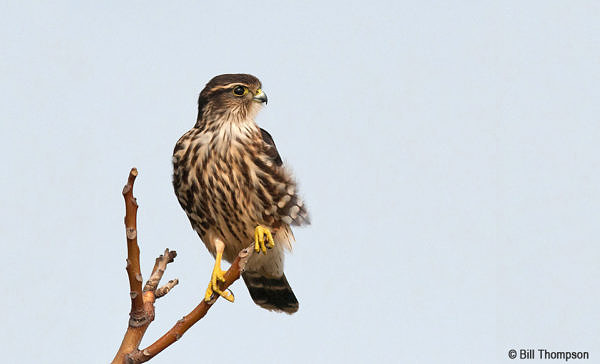
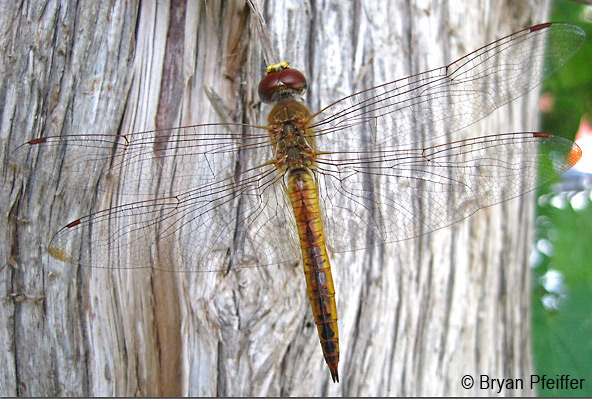
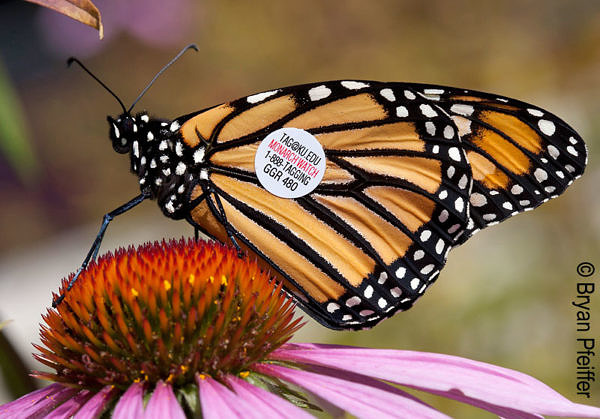

Close, delicate and determined!
Thanks, John!
Thanks, Barb. Very cool stuff!
Hi Vicky,
Yep, good catch. Not in the blog post. But I’ll update when more results come in.
Bryan
Fascinating! Let us know what it learned about where they do go.
Thanks for the science lesson. Really great info.
WonderFULL to learn from you, my friend. Thanks so much.
Love seeing the dragonflies so close and delicate -…